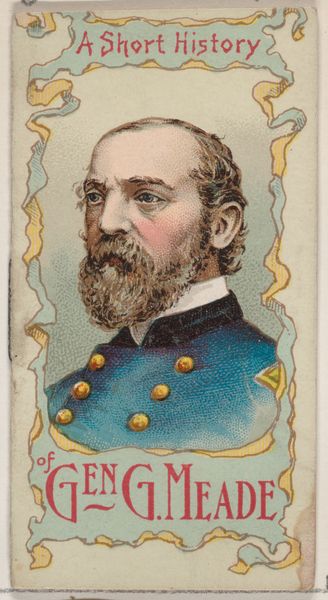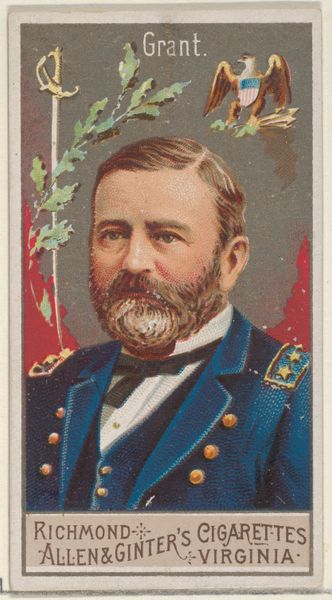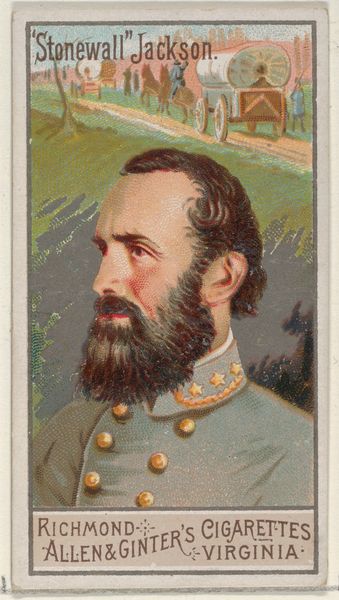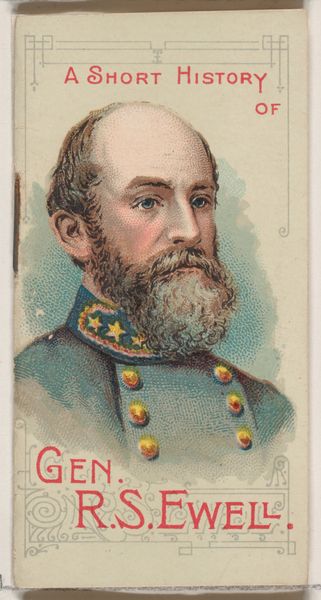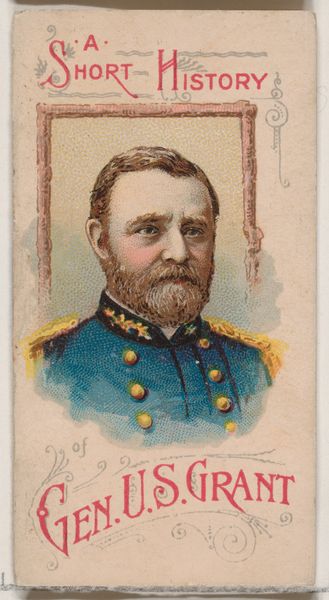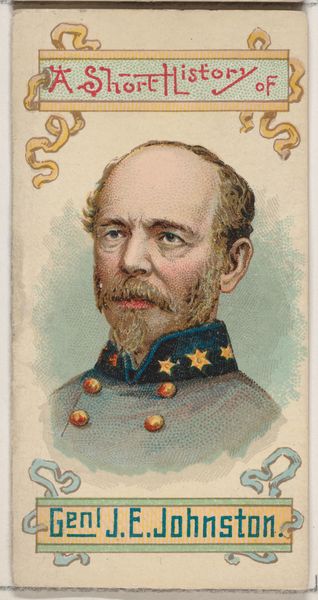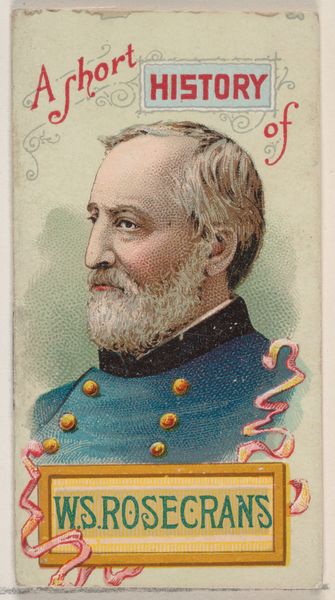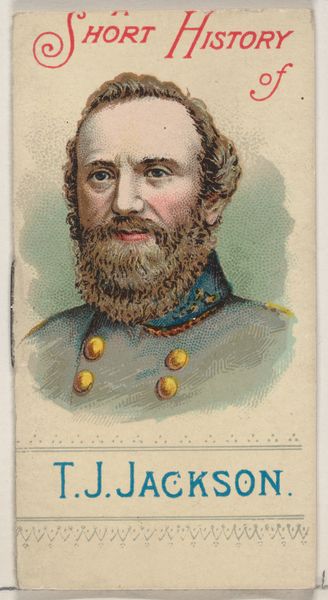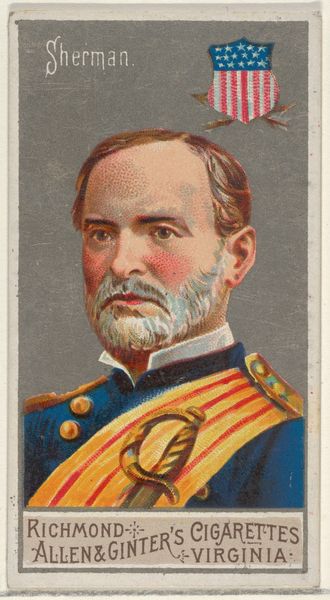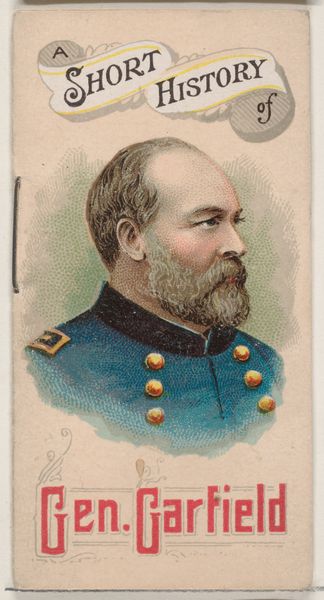
Harrison, from the Great Generals series (N15) for Allen & Ginter Cigarettes Brands 1888
0:00
0:00
drawing, lithograph, print
#
portrait
#
drawing
#
lithograph
# print
#
impressionism
#
caricature
Dimensions: Sheet: 2 3/4 x 1 1/2 in. (7 x 3.8 cm)
Copyright: Public Domain
Curator: This lithograph is part of a series called "Great Generals" produced in 1888 by Allen & Ginter as an advertisement in cigarette boxes. The drawing depicts General Harrison in his military uniform. What is your initial take? Editor: It's intriguing, though initially jarring to see a general stylized for a cigarette card. There’s an uneasy tension between militaristic imagery and the triviality of tobacco consumption. I mean, a product promoting death with an image meant to promote life... quite striking. Curator: I think you are on point with those inherent contradictions. These images reflect societal power structures, where tobacco companies capitalized on celebrity culture and heroism to market their goods. Who gets depicted, and why? These cards become tools of cultural encoding, promoting certain types of figures while simultaneously encouraging consumption. Editor: Absolutely. Consider the material—lithography, a method permitting mass production. The cards are designed to be inexpensive, readily available, and then tossed away with the cigarette packaging. These portraits weren’t intended to last or to be seen as ‘high art’; their value lay in their disposability. The labor to create and print these on a large scale is central here. Curator: Exactly. And think about the distribution network, and who was in the cultural landscape. The act of consumption ties back to the promotion of certain figures in positions of power while solidifying harmful habits, targeting certain groups. The casual way it circulated, it further perpetuated gender norms, racism, class, and a range of related constructs. Editor: Even the printing process holds cultural weight, a whole network of skilled laborers—artists, printers, factory workers—contributing to its creation and circulation. That makes me consider, then, how did they all understand the significance of this project? Curator: That's crucial. By focusing on the social networks engaged in production and reception of these artworks, and the people whose narratives often went unconsidered, we can explore how these pieces fit into and sometimes complicated constructions of national identity and heroism. Editor: Right, and the cigarette company profited greatly on what they created! Curator: Definitely! Seeing this portrait offers a view on cultural biases of that era. How it made something disposable out of representation is something that really gets my gears moving... Editor: Indeed, that disposable nature is worth further thought; a constant cycle of production and consumption. An economy that, unfortunately, we can all relate to.
Comments
No comments
Be the first to comment and join the conversation on the ultimate creative platform.
